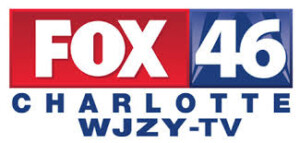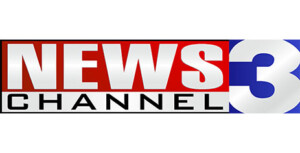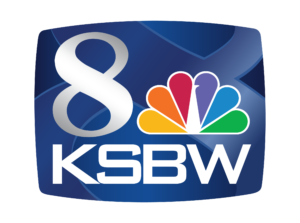 As LIN Media's chief tech, Brett Jenkins has numerous balls in the air. First there's continuing the HD transition at the group's growing portfolio of stations. Next, there's his work on ATSC that is planning TV's next-generation standards. And then there's also automation, mobile DTV, streaming and keeping an eye on the emerging 4K technology.
As LIN Media's chief tech, Brett Jenkins has numerous balls in the air. First there's continuing the HD transition at the group's growing portfolio of stations. Next, there's his work on ATSC that is planning TV's next-generation standards. And then there's also automation, mobile DTV, streaming and keeping an eye on the emerging 4K technology.
LIN’s Jenkins And His Busy Tech Agenda
LIN Media’s Brett Jenkins feels like his station group has been on the cutting edge of broadcast technology for some time now.
Since joining LIN — which operates 43 TV stations across 23 markets — as its chief technology officer in 2011, he’s expanded the group’s centralcasting model and is nearly finished transitioning all stations in the group’s portfolio to HD. A majority of the stations have some kind of streaming strategy, be it on apps or on the Web, and at this year’s NAB Show, two LIN stations joined Dyle in providing mobile DTV service.
Jenkins, a former VP of technology of Ion Media Networks, has also been active on the Advanced Television System Committee board. Next week, the 20-year broadcast veteran is a panelist at the ATSC’s annual meeting in Washington.
TVNewsCheck caught up with Jenkins this week to talk about what he plans on bringing to the table at the ATSC meeting, what’s new at LIN Media and his thoughts on some of the big tech issues facing the broadcast industry.
An edited transcript:
You’re a panelist at next week’s ATSC annual meeting and you’re going to be talking about the next-generation standard of television, ATSC 3.0. What would are some things you would like to see from that standard?
The most important thing that I will push for on that panel — and have been pushing for in various industries, groups and forums — is that we have got to bring some kind of new benefits to the consumer. The first digital transition, I think, was an example of that success, where high definition really was the benefit to consumers, and clearly it was a big success.
When I think back to those days, there was some skepticism about whether consumers would care, whether they would want the service. So you introduced a new technology, you introduced a consumer benefit with that technology and I think that’s the element that’s really important to the industry.
There are some things that consumers will really be interested in, whether that’s ultra HD, ultra resolutions, whether that is more interactivity, whether it’s some more non-real-time services, hybrid services where television viewing can be connected to content that’s coming over another channel, either on the main screen or on a second screen or on other devices.
I think all those things are in play among other things and I think that’s part of what the process is — to bring in a lot of really smart people, a lot of really smart companies and take a look at what really is possible if you start with a blank piece of paper design and which of those things are sort of most beneficial and most likely to excite and give them the rationale to want to essentially go out and get some of the new gear.
So, what’s new at LIN Media? Any new stations that have gone HD? Any planned for this year? Any new initiatives that are innovative?
Last year, we actually did quite a lot of HD launches. Eight of our markets went to HD news production and that was a major, major focus for us last year. Absent any station acquisitions, we would have completed our HD transition. Our view is that HD is the price of entry these days, right? It’s not a nice feature — it’s just what you have to have to be in the game.
So, we did complete a major acquisition last year with a bunch of other stations and I am in the process right now of converting those new stations that we acquired over to HD news production. We expect to have all that completed long before the end of the year. It’s our intention to have our station group fully HD in terms of production and distribution capabilities.
Do you feel like you can breathe after something like that is complete and then focus more on future projects?
To be honest with you, I was hoping to have that this year. We were hoping to have that transition behind us and do some other things. We do have some other interesting things. I mean it’s a little bit more a game of incrementalism at this point on the technology standpoint. It’s about getting more efficient, and the way I sort of describe it to our news directors and our news teams is: my job is to try to find technology that focuses on automating processes that can be automated.
I describe it as letting the robots do what the robots are really good at and then letting the people do what the people are really good at because, in the end, it takes a lot of human effort to uncover news and report news and to tell good stories, and what we strive to do with our technology operations is exactly that. It’s to automate what we can, make things as simple as possible for the user so they can focus on more sort of creative and human elements of doing what those people in the newsrooms do best.
You mention automation and efficiency. Where is LIN today with its centralcasting model? About five years ago, you had 16 of the 29 stations running on one of two master control hubs. How much of the group is centralcasting today?
We basically [add stations] where it makes sense operationally from both a financial and a logistical situation. So it’s not the entire group, but quite a number of our stations are hubbed in terms of master control and traffic.
I think we’re pretty careful and we’re pretty disciplined about not just doing it because we can, but doing it because it makes sense and it is in line with the philosophy of automating what we can but still having enough humans to do the things that it’s important for humans to do — to make the decisions, to react and to really not be cutting down on the types of things our stations are able to do in terms of their news coverage, their breaking news coverage, special events, live events and other things of that nature.
Today, we have three different hubs operating, and a number of stations — something like three quarters of our stations — are centralcasting and we judge that it works really, really well. We think it provides a great service to the stations and it’s good operationally and really, I have been surprised since I have been at LIN how smooth the operations really are in the centralcasting model.
Heading into this year’s NAB Show, you told me you planned to casually look at 4K technology. Did anything impress you? Do you think there is a future for 4K in live, local news?
You know, it’s not clear to me whether there really is or not. I think the jury is still out on that one. 4K, to me, seems like it really depends on screen size and viewing distance. It’s not as big a jump to me, from a pure consumer standpoint as SD was to HD. 4K is a little bit more situational — I will reserve judgment. We will be watching our network partners and then seeing what they do and we will be watching the equipment vendors. There’s still a lot to be done. I mean in my view it’s still, really, really premature in terms of workflow, gear and things that are really able to handle a 4K production process.
What kind of ENG cameras is LIN using across its station group? Are you trying out anything new?
It really varies across the stations. We typically don’t standardize across the stations for purchasing our ENG cameras. We have a mix of just about every vendor out there at one of our stations.
That being said, we have been watching a couple of them. The small form factors are really, really interesting, especially as we look at expanding the people in our newsroom that can actually shoot video. That’s a reality in today’s world when some of the best news and breaking events are coming from people shooting with iPhones. You just have to change that model to some extent. You have got to provide capabilities to more and more feet on the streets and so these small form factor cameras are really great at doing that. There’s one that we have been playing around with — the JVC [GY-HM650].
It doesn’t take away the need for really nice, bigger cameras with larger optics and the ability to shoot higher quality pictures at things like local sporting events. So we kind of look to try to get a great mix of assets in the field, but certainly those smaller form cameras are really, really interesting.
Another story out of this year’s NAB was mobile DTV. Does LIN have any new stations coming onboard with a mobile DTV signal? How many stations does LIN have on the air with mobile today?
We announced at NAB, as part of the Dyle announcement, that we were going to launch two more stations in mobile this year. One is Portland, Oregon, KOIN, another is Dayton, WDGN, and again, we have worked with the Mobile500 and Dyle. We launched with Dyle in those markets mainly because there are other stations in the markets that are on the air and it’s about providing more depth in each market. The only station we have on the air right now is KXAN in Austin. Ultimately, I think consumers will want this service
I reported at NAB that there was a possible — and likely — merger of Dyle and the Mobile500 Alliance. Do these two companies need to merge in order to make mobile DTV a consumer success?
I will be honest with you. I have not really paid too much attention to some of the various workings between Mobile500 and Dyle. That’s largely just because I expect that it will work out one way or the other, whether that means a merger of the two groups or just a cooperation.
Keeping with mobile, last week CBS announced it’s investing in streaming service Syncbak. Does LIN have any plans to stream linear channels? And if so, are those services a better alternative to mobile DTV? Or do they supplement mobile DTV?
We feel like we have been a little bit ahead of the game in terms of live streaming. Our stations, maybe with the exception of a couple, currently all do live streaming. It’s not during all parts of the day, but you can go up to any of our digital properties whether it’s in our apps or online and you could get live streaming content for a good portion of our programming day.
I think that mobile DTV has its place. So does streaming. When you can get mobile DTV you’re not eating up your data plan, so that’s just an obvious clear win for consumers. It’s early days, but I would probably guess that we will continue to provide live streaming on various devices. We are also still going to be supportive of mobile DTV because we think that is also going to be an important part of the distribution of our content and the way that consumers get our signal.
Are you working with Syncbak?
We have tested with them in the past and we’re constantly looking at them and following them and, I guess, rooting for them.
In our last Executive Outlook print publication, I reported that LIN was looking at channel-in-a-box solutions for your stations. Do you have any update on those initiatives?
I am pretty sure that I like what I see with channel-in-a-box. As I mentioned, we’re starting to dip our toe in the water, testing out some of those systems and if they work well we will be looking over time to use these systems more and more, especially at our centralcasting locations. It’s those multichannel environments where I personally believe that channel-in-a-box solutions work really, really well.
Longtime antenna manufacturer Dielectric announced last month that it’s closing its business. What kind of impact does that have on LIN Media and the broadcast industry as a whole?
Will it have any impact on us? Yeah, I think it will. They were a good vendor of ours, a great manufacturer, really great people, good technology, great products, good support. My reaction was one of disappointment for sure when I heard the news.
So, is there any kind of short-term impact? We’re certainly going to keep broadcasting, so we will work to see what happens there, whether someone’s going to take over some of those products and technologies. We will work with other vendors. They certainly weren’t our only supplier of antennas and line filters and those types of things. It’s a big blow to the industry, quite frankly.


































Comments (0)